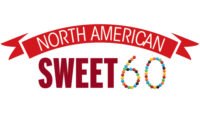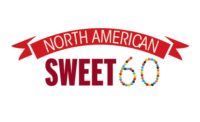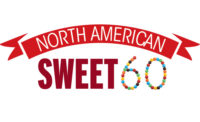The North American Sweet 60 is a subset of the Global Top 100 list. In order to qualify for the listing, companies have to be based in North America.
In what seems to be an endless effort to strengthen its North American presence, Ferrero Group has again snapped up another U.S. company’s confectionery business, or at least some of it.
Kellogg is in the process of selling several cookie brands, including Keebler, its fruit snacks, pie crusts and ice cream cones for $1.3 billion to the Italian candy manufacturer. Kellogg, headquartered in Battle Creek, Mich., has retained its snack and cereal bars and wants to concentrate on its core businesses.
The businesses to be sold in the deal, which include Mother’s, Famous Amos, Murray and Little Brownie Bakers, supplier of Girl Scout Cookies, have combined annual sales of about $900 million, according to a statement from the cereal giant. If the deal goes through in July, as expected, Kellogg will be relinquishing six of its plants and one leased building.
In early 2018, Ferrero bought Nestle’s U.S. candy business, including the Butterfinger and Baby Ruth brands, and obtained three of its facilities at the time. Nestle’s U.S. businesses reportedly did $935 million in sales in 2016. Before that, Ferrero grabbed Chicago-based Ferrara Candy Co., which had been doing over a billion in sales a year. They also own Fannie May and Harry London.
With Ferrara now doing around $1.5 billion a year, all the American businesses owned by Ferrero Group are expected to do close to $3 billion in sales, not counting the confectionery items of the Kellogg sale. Italian-based Ferrero Group, which is listed in the Global Top 100 in January, has worldwide sales of more than $12 billion and is currently the second largest candy company in the world.
There were a couple of other sales as well. Kar’s Nuts, a division of KNPC Holdco, acquired Morley Candy Makers/Sanders Candy, of Clinton Township, Mich., last October. The manufacturer of nut and trail mix snacks, selling under Kar’s Nuts and Second Nature brands, reportedly had $140 million in annual sales. With Sanders Candy, the combined company is expected to generate around $185 million annually. Nick Nicolay will be the CEO of the combined company, headquartered in Madison Heights, Mich.
In fact, this seems to be the year of changing leadership.
Carolyn Hawk Horter, great grand-daughter of Gertrude Hawk, is taking over the family business. Bill Aubrey has moved up to be the CEO of Gertrude Hawk Holdings, the umbrella company, while Horter is chair of the subsidiary, Gertrude Hawk Chocolates.
Franklin Crail, co-founder of the first Rocky Mountain Chocolate Factory in 1981, retired in February from serving as the company’s chairman of the board, president, CEO and director. The board promoted Bryan J. Merryman to take his place. Merryman joined the company in 1997 as vice president of finance and chief financial officer. He’s been serving as chief operating officer and director since 1999 and treasurer since 2000.
Mars Inc. promoted its chief marketing and customer officer, Andrew Clarke, to global president of Mars Wrigley Confectionery U.S. in September 2018 after the retirement of Martin Radvan, who’d been with the company for 32 years. Clarke joined Mars in 2000 in category and sales leadership, has held several other roles in the company until he became the chief customer officer in 2015 and, in additionally, marketing the next year.
Rolf Schlangen replaced Andreas Pfluger as president and CEO of Lindt & Sprungli (North America) Inc., headquartered in Stratham, N.H. Pfluger retired at the end of 2018.
Matt Caiazza succeeded Kevin Silva as president and CEO of The Warrell Corp., of Camp Hill, Pa.
Gary Viljoen replaced Jeff Rome as CEO of Impact Confections, of Janesville, Wisc.
Randy Simonson was appointed president of Justin’s LLC, a division of Hormel Food Corp. He replaces Mike Guanella, who formerly presided over operations at the Boulder, Colorado headquarters.
We’ll have to stay tuned to find out how this group of new leaders finds its own way to impact the confectionery market in the years ahead.
Editor’s Note: All sales, plant and employee estimates are for confectionery operations only, unless otherwise noted. In addition, Candy Industry has attempted to factor out industrial chocolate sales and plants. All estimates come from a combination of manufacturer surveys, annual reports, media reports, private and published research, and analyst interviews. The North American Sweet 60 is a “work in progress,” one that many times involves making estimates when companies refuse to share their specific data. If there are any oversights or incorrect estimates, please fill free to contact Candy Industry Magazine’s editor Crystal Lindell at lindellc@bnpmedia.com so we can adjust the listing for next year.









